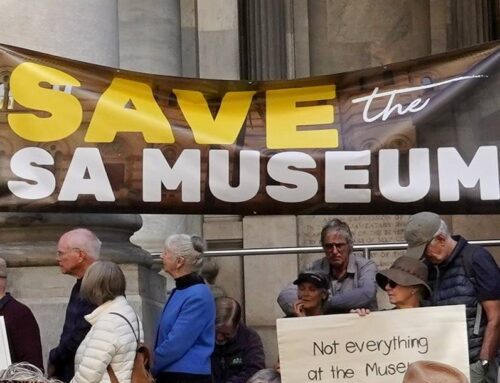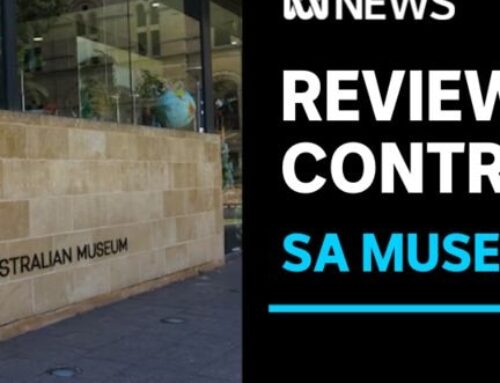What are the COVID test requirements for different states and territories as domestic borders open?
Booking flights, refuelling the car and packing bags aren’t the only things you’ll need before heading interstate this Christmas – you might also need a COVID test.
As state border restrictions begin to ease, here’s the information you need to determine whether you’ll need a test and the type of test officials will accept.
Click on a link below to jump to testing requirements in each state or territory:
What COVID test will I need?
If you’ve had a COVID test in the past 18 months, chances are it was a PCR test.
Those are the ones that involve swabs being shoved up your nose and down your throat – and they’re what most government’s will need.
What is a PCR test?
Griffith University infection prevention and control expert Thea van de Mortel said PCR stands for polymerase chain reaction.
“The polymerase part is because that’s the name of the enzyme that’s used in the test, the chain reaction part is because there’s a series of cycles in the machine that give you the test result at the end,” Professor van de Mortel said.
The PCR test identifies viral nucleic acids or genetic material.
What is a rapid antigen test?
A rapid antigen test, which identifies viral proteins, can return a result within minutes and can be done at home.
While that’s convenient, Professor van de Mortel said the PCR tests provide a more accurate result.
“The PCR is much more accurate because what happens is the sample goes into the machine and the machine is able to amplify and replicate up that genetic material to a point where it’s easily detectable,” she said.
“Whereas, with the proteins, there isn’t an amplification process so it’s easier to pick it up if someone’s got a high viral load but not so easy to pick it up if they don’t.”
Why do state governments prefer PCR tests?
Because they’re more accurate.
There are also other factors the state government has considered when choosing which test is appropriate for Queensland border entry.
Professor van de Mortel says rapid antigen or at-home testing has its disadvantages.
Who pays for COVID tests?
Domestic travellers do not have to pay for COVID-19 tests, which state and territories require for entry.
You just need to head to a state-run testing clinic to get one for free.
The Commonwealth and states jointly fund tests for people that require one under a public health order, such as a domestic travel requirement.
What if you’re an interstate traveller or resident stuck elsewhere for a longer period?
Once Queensland reaches the 80 per cent double-dose milestone for those aged 16 and over, anyone moving in or out of the state who has been overseas or in an interstate hotspot will have to return a negative PCR result.
The result must be returned in the 72 hours prior to travel and authorities will continue to accept an official text message as evidence.
The government stresses the PCR rule is only a temporary measure until the state hits the 90 per cent vaccination target.
Loading
What if you’re a Queensland resident who wants to do a brief trip interstate?
If the trip involves time in an interstate COVID hotspot, the Queensland rule remains: you need a negative PCR test in the 72 hours prior to travel, until the state reaches the 90 per cent (for over 16s) vaccination milestone.
Health authorities have been looking at a loophole allowing people to get a test in Queensland, travel to an interstate hotspot, and return within the three-day window.
The state’s Acting Chief Health Officer Peter Aitken says the intent is for people to get tested in the area they’ve been exposed.
“That’s what we want Queenslanders to do,” he said.
Ms Palaszczuk said: “At the moment, going to Sydney for a day or two will be out of the question until we get to that 90 per cent double dose”.
But the Premier has flagged the possibility of a border bubble arrangement for communities in northern New South Wales.
What are the testing requirements for various states?
Tasmania
A negative COVID test is also required in Tasmania.
From December 15, travellers aged 5 and older who have been in “high risk areas” in the past 14 days will have to return a negative PCR test within the 72 hours before departing for Tasmania.
If you can’t show evidence of testing on arrival, you’ll have to isolate until you return a negative COVID result.
In Tasmania, travellers who have been outside of the state for “fewer than seven days” won’t need to return a negative test.
South Australia
In South Australia, it’s a bit more complicated.
Entry conditions hinge on the level of risk deemed for the council area you are travelling from.
If it’s very low risk, with no evidence of COVID-19 community transmission, there are no entry conditions other than vaccination.
But if you’re travelling from a low-, moderate-, or high-risk place, you need to test negative to COVID in the 72 hours prior to arriving in SA.
On top of this, for those moderate or high-risk travellers, there’s an added requirement to get tested within 24 hours of arriving in SA.
Similarly, in South Australia, vaccinated returning residents can also skip the test if they’re leaving the state for 72 hours or less.
Western Australia
For Western Australia, once it reaches a 90 per cent double dose rate for 12 years and older, interstate arrivals will also need to return a negative test in the 72 hours before departure.
You’ll also have to undertake a test on arrival in WA – that’s to be phased out, pending a review.
But it’s a different scenario again in some other states.
Victoria
Victoria had been operating on a traffic light system, but late yesterday that system was abolished due to the state hitting their target of 90 per cent (over the age of 16) fully vaccinated.
This means regardless of whether you’re vaccinated or not, you can enter Victoria without the need for a PCR test.
ACT
The country’s capital has made things incredibly easy.
PCR tests aren’t required for entry but if you’re unvaccinated, not a resident of the ACT, and you’ve visited a “high-risk geographical area” you can’t enter the territory without an exemption.
Even then, you’ll need to comply with stay-at-home orders outlined in your exemption.
New South Wales
New South Wales doesn’t require PCR tests for entry.
But if you’ve been in a “place of high concern – close contact place”, you won’t be able to enter NSW for 14 days, or seven days if you’re fully vaccinated.
If you’ve been identified as being in a “place of high concern – casual contact place” you can’t enter NSW without receiving a negative test result.
Northern Territory
Only fully vaccinated people are allowed to enter the NT, unless you’re a returning Territorian or essential personnel.
As it stands, anyone entering the NT from a red zone is required to receive a negative PCR test within 72 hours prior to arrival, you’ll also need a rapid antigen test upon arrival at the airport or at the closest regional centre if travelling by road, before entering seven days of home quarantine.
You’ll then need a PCR test on day five, when you leave quarantine, on day eight and again on day 14.
It’s worth noting that once you leave home quarantine, you’ll need to spend a further seven days in a high-vaccination zone.
That’s an area with 4G mobile coverage and a vaccination rate of 80 per cent (of 16+) or above. Currently that’s Greater Darwin and Alice Springs.
Five days before Christmas things change slightly.
From December 20 anyone entering the Territory will need a rapid antigen test upon arrival, or at the closest regional centre if arriving by road.
Home quarantine will be scrapped but a testing regime will remain, we’re expecting more detail on this in the coming weeks.
Loading form…





